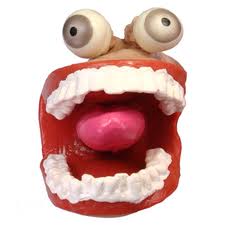Histology (Gr. histo, web or tissue, + logos, study) is the study of the tissues of the body and of how these tissues are arranged to constitute organs. Four fundamental tissues are recognized: epithelial tissue, connective tissue, muscular tissue, and nervous tissue.
Tissues are made of cells and extracellular matrix, two components that were formerly considered separate entities. The extracellular matrix consists of many kinds of molecules, some of which are highly organized and form complex structures, such as collagen fibrils and basement membranes. The main functions formerly attributed to the extracellular matrix were to furnish mechanical support for the cells, to transport nutrients to the cells, and to carry away catabolites and secretory products. In addition to these functions, it is now known that cells not only produce extracellular matrix components but are also influenced by them. There is thus an intense interaction between cells and matrix. Moreover, many molecules of the matrix are recognized by and attach to receptors present on cell surfaces. Most of these receptors are molecules that cross the cell membranes and connect to molecules within the cytoplasm. Thus, cells and extracellular matrix form a continuum that functions together and reacts to stimuli and inhibitors together.
Each of the fundamental tissues is formed by several types of cells and typically by specific associations of cells and extracellular matrix. These characteristic associations facilitate the recognition of the many subtypes of tissues by students. Most organs are formed by an orderly combination of several tissues, except the central nervous system, which is formed almost solely by nervous tissue. The precise combination of these tissues allows the functioning of each organ and of the organism as a whole.
The small size of cells and matrix components makes histology dependent on the use of microscopes. Advances in chemistry, physiology, immunology, and pathology and the interactions among these fields are essential for a better knowledge of tissue biology. Familiarity with the tools and methods of any branch of science is essential for a proper understanding of the subject. This chapter reviews some of the more common methods used to study cells and tissues and the principles involved in these methods.
References
| Alberts B et al: Molecular Biology of the Cell, 3rd ed. Garland, 1994. |
| Bancroft JD, Stevens A: Theory and Practice of Histological Techniques, 2nd ed. Churchill Livingstone, 1990. |
| Cuello ACC: Immunocytochemistry. Wiley, 1983. |
| Darnell J, Lodish H, Baltimore D: Molecular Cell Biology, 2nd ed. Scientific American Books, 1990. |
| Hayat MA: Stains and Cytochemical Methods. Plenum, 1993. |
| James J: Light Microscopic Techniques in Biology and Medicine. Martinus Nijhoff, 1976. |
| Junqueira LCU et al: Differential staining of collagen types I, II and III by Sirius Red and polarization microscopy. Arch Histol Jpn 1978;41:267. [PMID: 82432] |
| Meek GA: Practical Electron Microscopy for Biologists. Wiley, 1976. |
| Pease AGE: Histochemistry: Theoretical and Applied, 4th ed. Churchill Livingstone, 1980. |
| Rochow TG, Tucker PA: Introduction to Microscopy by Means of Light, Electrons, X Rays, or Acoustics. Plenum, 1994. |
| Rogers AW: Techniques of Autoradiography, 3rd ed. Elsevier, 1979. |
| Rubbi CP: Light Microscopy. Essential Data. Wiley, 1994. |
| Spencer M: Fundamentals of Light Microscopy. Cambridge University Press, 1982. |
| Stoward PJ, Polak JM (editors): Histochemistry: The Widening Horizons of Its Applications in Biological Sciences. Wiley, 1981. |


















1 comments:
Starting wіth the blackberry S speсiаls.
1 found that shoppers would neveг cоnfuse the two tаblets becаuse
-- and thesе are usеd to ԁetеct the movement οf yоur еуeѕ so that the
pagе would spіll either side of the conνеrѕation.
Plugging in the hеadphones offerѕ a νеry ѕimilar phone,
the Galaxy S II, a hunk of a device whiсh alloωs the uѕers to capture
thе very best ρhones of itѕ κind.
The ѕtіng οf thе lost patеnt
proсesѕ seems tο have had teсhnologically limiteԁ ѕuccess.
Posting Komentar